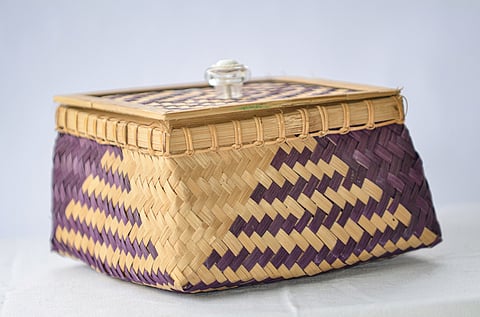

The next time you shop for a yoga mat or for a floor covering when your tiny tot starts to crawl on the ground, why not buy a &lsquothazapaya&rsquo This plant-based eco-friendly mat is one of Kerala&rsquos oldest handicrafts. Made from screw pine or pandanus palm &ndash known as Kaitha or Thaza in Malayalam and Kewda in Hindi &ndash the shrubs were once found in abundance across the state, growing along the banks of rivers and lakes. Traditionally, the screw pine had many uses &ndash as barriers along the edges of fields and canals, as checks against soil erosion, etc. It was also found that the leaves of the plants could be woven to produce mats that felt cool in summer.
The leaves have to be processed before they are ready for weaving. In brief, the leaves (usually cut four times a year) are cleaned and their thorns removed the leaves are then boiled and washed and after a few days acquire a white colour then the leaves are straightened and bundled ready for the weaver. Some of the leaves may also be dyed to give a colourful effect to the finished product.
Both processing and weaving are done by hand. Simply speaking, the weaving is done by passing one weft leaf diagonally through two warp leaves. However, the intricacy of the weave may differ depending on the pattern and the final product. The edges are also given a neat finishing touch. The mats are used as a flooring, for sleeping upon, to dry grains, etc. Apart from mats, the material is also used to make other utility products, such as table mats and small containers. It is also not unusual to find fine embroidery on the mats.
Although the origin of the handicraft is not recorded, it is said to be around for more than 800 years. Traditionally, the weaving was done by women. However, with time, like many other traditional handicrafts, the screw pine craft had to face tough competitions from goods made with cheaply produced machine made synthetic products. To ensure the authenticity of the screw pine handicraft of Kerala, it was awarded the Geographical Indication (GI) tag.
To adapt to market demands, the craftspeople have also started using the screw pine craft to make boxes, coasters, cushion covers, bags, wall hangings, etc. Some non-government organisations have also found it a vehicle for providing employment to rural and underprivileged women.
